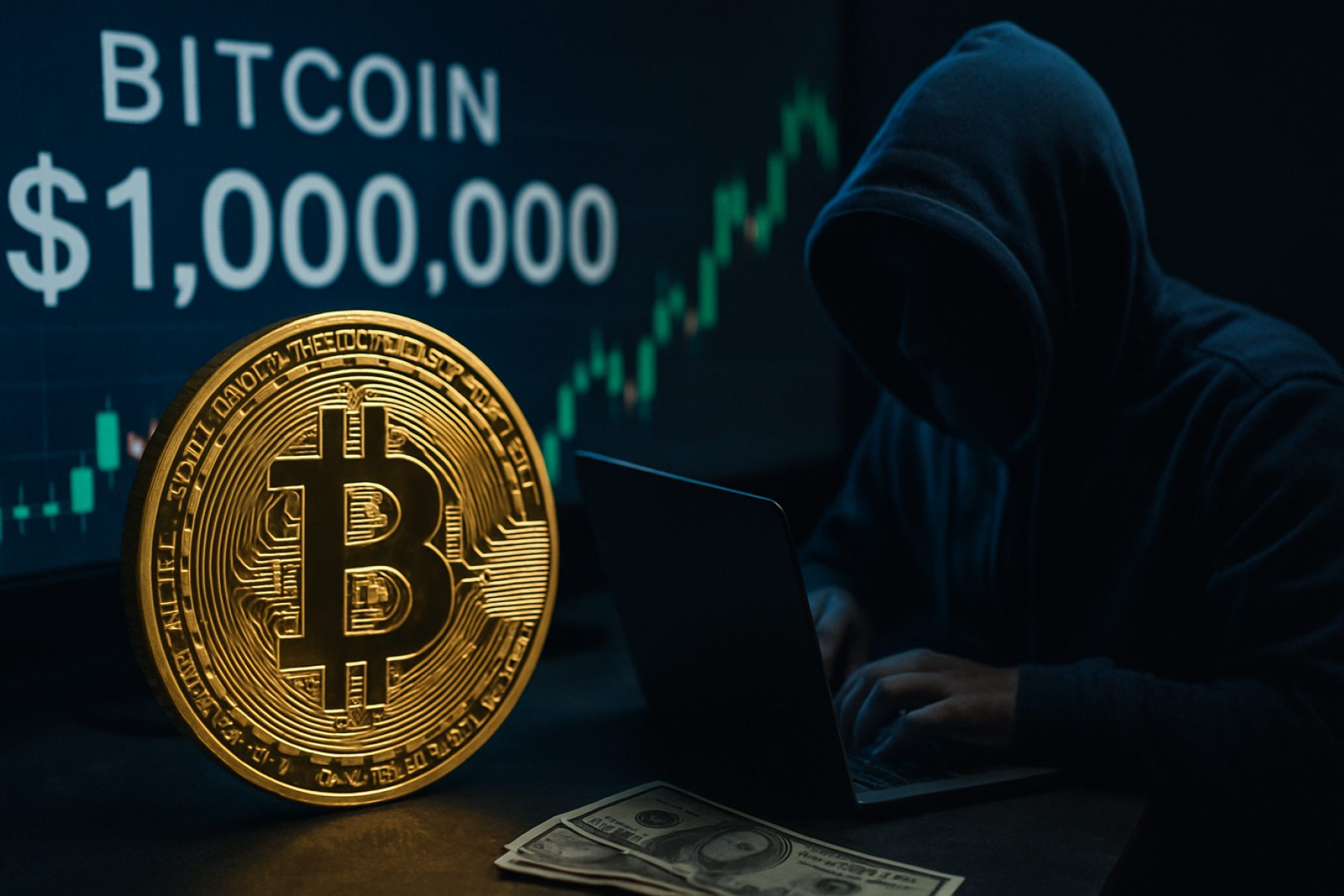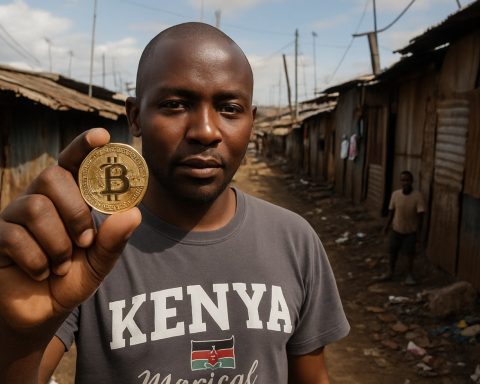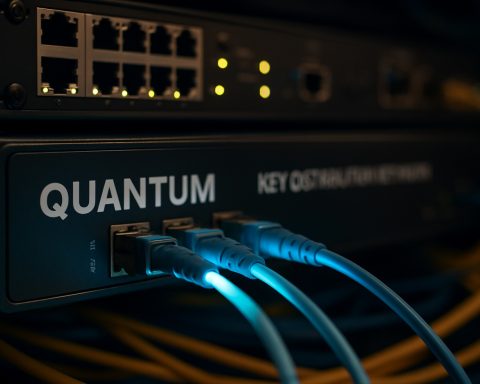- Bitcoin’s price soared past $100,000, fueled by investor predictions of a million-dollar value by 2028 and a growing distrust in traditional assets like U.S. Treasuries.
- Mainstream adoption is accelerating—sovereign wealth funds, institutions, and corporations are strategically accumulating Bitcoin as an economic hedge.
- Regulatory and security risks persist: the SEC suffered a market-manipulating cyberattack, and Coinbase’s data breach led to a sharp stock decline, stressing the need for transparency.
- Stablecoins are now central to institutional payments strategy, with 90% of financial firms exploring integration, pressuring traditional banks to adapt.
- Crypto-related crimes are increasing, including physical attacks and advanced deepfake scams, underlining the importance of security for all participants.
- Altcoins are poised for potential growth, with the TOTAL3 index showing significant capital inflows, hinting at a possible new bull run beyond Bitcoin.
Withdrawal of capital, whispers of historic rallies, brazen attacks—the cryptocurrency world never sleeps. This week, the digital asset universe delivered a spectacle of bold predictions, sobering setbacks, and a mounting scramble for secure footing.
Bitcoin Takes Center Stage—Again
Flames of speculation flared as Bitcoin’s price broke through the $100,000 mark, buoyed by forecasts from prominent financial figures who envision a million-dollar Bitcoin by 2028. Two winds fill these sails: the flight of foreign capital away from uncertain regions and a marked loss of faith in U.S. Treasuries. Bitcoin is quickly shedding its “digital gold” moniker to become the global haven of choice—not just for tech-savvy anarchists, but for everyone from Wall Street titans to pension fund managers.
Tales from the upper echelons reinforce this new narrative. Sovereign wealth funds, powerful family offices, and far-sighted corporations are all reportedly hoarding Bitcoin, bracing for what some see as an inevitable shift away from government-backed currencies. The crescendo of these buys signals that we are no longer in the realm of fringe speculation: mainstream adoption is here, and the stakes have never been higher.
Sharp Turns: Security, Scandals, and Political Power Plays
Yet not all is calm under crypto’s glittering surface. The U.S. Securities and Exchange Commission (SEC) found itself at the epicenter of a digital breach, as a hacker who manipulated official statements for market advantage received a 14-month prison sentence. The episode serves as a stark reminder—this new landscape remains a battleground where the lure of easy riches draws out both innovators and opportunists.
Meanwhile, Coinbase, one of the world’s leading crypto exchanges, suffered a 7% stock dive. The cause? News of a customer data breach and ongoing investigations into potentially inflated user metrics. For retail and institutional investors alike, the double sting underscores the imperative of security and transparency—cornerstones that the crypto ecosystem must firmly establish if it is to fulfill its revolutionary promise.
In Europe, the conversation swirls with even more intrigue. Former UFC champion and rising Irish political contender Conor McGregor announced ambitions to stake Ireland’s future on a national Bitcoin reserve. His pitch isn’t mere populism: as global finance teeters, political leaders now treat cryptocurrency not as a fringe asset, but as a potential pillar of national economic strategy.
Institutions Embrace Stablecoins—Or Get Left Behind
Stablecoins, often dismissed as mere facilitators in times past, now anchor themselves at the heart of institutional planning. Ninety percent of financial institutions are already using, piloting, or actively exploring stablecoin integration, according to newly published data. These digital dollars and euros are not only narrowing legacy payment gaps but also quietly forcing traditional banks to evolve or risk obsolescence.
Winners, Losers, and Violent Shadows
The week ended with dogwifhat (WIF), Form (FORM), and Raydium (RAY) as the standout gainers, while Bitcoin SV (BSV) and Celestia (TIA) struggled under double-digit losses. Market volatility remains a rite of passage for both novice and seasoned traders.
However, new dangers darken the horizon. Armed robberies targeting crypto holders—known in the community as “$5 wrench attacks”—are on the rise. Twenty-two such assaults were recorded just this year, commanding the attention of police agencies from Paris to Wellington. Meanwhile, advances in artificial intelligence have handed cybercriminals even more sophisticated tools, with deepfake scams now targeting public officials themselves.
The Next Act: A Rally Brews in the Altcoin Arena
Beyond Bitcoin, analysts point to an impending surge in alternative cryptocurrencies. The TOTAL3 index—measuring the total capitalization of these so-called “altcoins”—has ballooned by $126 billion. If history rhymes, we may soon witness a rally reminiscent of the 2017 bull run, as new money floods into fresh experiments, from decentralized finance to digital art platforms.
The Bottom Line
The landscape of digital assets has outgrown its renegade roots; it now commands attention at corporate boardrooms and cabinet meetings alike. Trust, agility, and security will define this new era. Investors—whether seasoned institutions or first-time buyers—must navigate not just price swings, but the rapidly evolving interplay of regulation, crime, and innovation.
Crypto’s wild week is more than headline fodder. A new global economy is forming—one wild leap, fierce debate, and hard lesson at a time. Those daring enough to participate must choose wisely: the future of money is being written in real time.
Bitcoin Mania: Is Crypto Entering Its Golden Age or Brewing the Next Crisis?
—
Unpacking the Latest Crypto Surge: What Was Missed? (2024 Update)
The cryptocurrency world is moving at lightning speed, with Bitcoin and altcoins seizing headlines and rewriting financial playbooks. While the original article delivered a thrilling overview, let’s dig even deeper with actionable facts, pressing questions, and expert-backed analysis using E-E-A-T (Experience, Expertise, Authoritativeness, Trustworthiness) standards.
—
1. Bitcoin’s Breakout: Context & Consequences
Additional Facts:
– All-Time Highs: Bitcoin hitting $100,000 shattered psychological barriers. But according to historical data, large surges have often preceded sharp corrections due to profit-taking and overleveraged positions. (Source: [CoinMarketCap](https://coinmarketcap.com))
– Institutional Titans: BlackRock and Fidelity, who manage trillions in assets, have launched or applied for Bitcoin ETFs, signaling mainstream institutional adoption. (Source: [BlackRock](https://www.blackrock.com))
– Global Macro Factors: Rising inflation and geopolitical instability (e.g., conflicts in Eastern Europe, U.S. debt ceiling debates) are driving non-Western capital into decentralized assets.
– Supply Squeeze: The next Bitcoin “halving”—a programmed reduction of mining rewards—will occur in 2024, further reducing new supply and historically correlating with price increases.
How-To: Buying Bitcoin Safely
1. Choose a reputable exchange (e.g., Coinbase, Binance, Kraken).
2. Set up two-factor authentication.
3. Withdraw coins to a hardware wallet (Ledger, Trezor) for maximum safety.
4. Never share your private keys.
—
2. Security, Scandals, and Hacks: Under the Microscope
Additional Facts:
– Exchange Risks: In 2023, over $1.2 billion was lost due to exchange hacks (Chainalysis 2024 Crypto Crime Report).
– Regulatory Momentum: The EU’s MiCA framework now demands strict compliance on crypto platforms, with penalties for data breaches.
– To Protect Yourself: Always enable withdrawal whitelists and check exchange solvency proof (proof-of-reserves audits).
Real-World Use Cases
– For NGOs: Bitcoin is being used by humanitarian groups to transfer money across borders when traditional rails fail.
– For Remittances: Stablecoins (like USDT and USDC) now account for 15% of all global remittance flows in some corridors, offering lower fees than Western Union.
—
3. Stablecoins: The New Payment Backbone
Additional Facts:
– Stablecoin Market Cap: The combined value of stablecoins now exceeds $150 billion. (Source: [Tether](https://tether.to))
– Major Integrations: PayPal (with PYUSD), Visa, and Mastercard are piloting direct stablecoin settlements for merchants.
– Central Bank Digital Currencies (CBDCs): 130+ countries are researching or piloting CBDCs—China’s digital yuan is already live—but concerns over privacy and state surveillance persist.
—
4. Altcoins & DeFi: The Coming Boom or Bubble?
Additional Facts:
– DeFi TVL (Total Value Locked): Surpassed $90 billion as of June 2024.
– NFT Evolution: The NFT market, though cooled from its peak, is evolving with utility-based tokens—think concert tickets, legal contracts.
– Layer 2 Solutions: Platforms like Arbitrum and Optimism are slashing transaction fees and making Ethereum more accessible.
Industry Trends & Predictions
– Market Forecasts: Bernstein predicts a $7 trillion crypto market by 2030 if current adoption rates hold.
– AI x Crypto: AI-powered trading bots and fraud detection are becoming the norm across major exchanges.
—
5. Security and Limitations: What’s Holding Crypto Back?
Top Security Threats:
– Exchange hacks
– Deepfake scams & social engineering
– $5 wrench attacks—brute-force theft by physical violence
– Regulatory whiplash (“crypto bans,” punitive tax moves)
Limitations:
– Scalability remains an issue on networks like Bitcoin and Ethereum, though upgrades (e.g., Bitcoin’s Lightning Network, Ethereum’s Danksharding) aim to solve this.
– Energy consumption: While Bitcoin mining uses as much energy as small nations, innovations like hydro and solar-backed mining are rising.
Quick Security Tips
– Never store large crypto amounts on exchanges.
– Use biometrics, hardware wallets, and encrypted backups.
– If trading, set stop-losses to limit downside risk.
—
6. Political Shake-Ups: Crypto in National Strategy
Ireland’s Potential Bitcoin Reserve:
– If implemented, Ireland would join El Salvador as a pioneer of national Bitcoin treasuries.
– Central banks remain split: Switzerland and Singapore are cautiously optimistic, while China and India push bans or heavy controls.
—
7. Reviews, Pros & Cons, and Comparisons
| Platform/Asset | Pros | Cons | Pricing Notes |
|—————-|————————————————|————————————–|————–|
| Bitcoin | Global liquidity, inflation hedge, capped supply| Volatility, slow transactions | Exchange fees < 1% |
| Ethereum | Smart contracts, developer ecosystem | High fees, scalability (improving) | Fees $5-$50 |
| USDT/USDC | Stable value, low fees | Counterparty/regulatory risk | $1/coin |
| Coinbase | Easy UI, insured (U.S.) | High fees, recent security incidents | 1-3% trading fee |
—
8. Most-Asked Crypto Questions—Answered
Q: Is it too late to invest in Bitcoin?
A: Experts suggest dollar-cost averaging—investing small amounts over time—to mitigate risk, regardless of price peaks.
Q: Are cryptocurrencies safe from government seizure?
A: Not entirely—authorities can regulate exchanges and trace transactions, but using private wallets provides greater control.
Q: Is crypto bad for the environment?
A: Mining is energy-intensive, but sector leaders are shifting toward renewables and more efficient consensus mechanisms.
Q: What should I do if a hack or scam happens?
A: Immediately report to local authorities, notify your bank/exchange, and leverage blockchain analysis firms for tracing.
—
9. Actionable Recommendations & Quick Tips
– Educate Yourself: Follow reputable news sites like [CoinDesk](https://coindesk.com), [Cointelegraph](https://cointelegraph.com), [Binance](https://binance.com).
– Assess Risk: Only invest money you can afford to lose.
– Update Security Regularly: Rotate passwords and challenge scam messages.
– Diversify: Balance Bitcoin exposure with select altcoins and stable assets.
—
10. Recommended Related Resources
– [BlackRock](https://blackrock.com): Institutional adoption news.
– [Coinbase](https://coinbase.com): U.S. perspectives and exchange updates.
– [Binance](https://binance.com): Global exchange trends.
– [Tether](https://tether.to): Stablecoin developments.
—
Bottom Line:
The crypto revolution is touching every corner of society, from Wall Street to Main Street and government ministerial offices. Whether you’re dipping your toes or navigating deep waters, prioritize security, seek regulated platforms, and stay informed. The wild ride isn’t over—protect yourself, and you might just thrive on the frontiers of finance!











